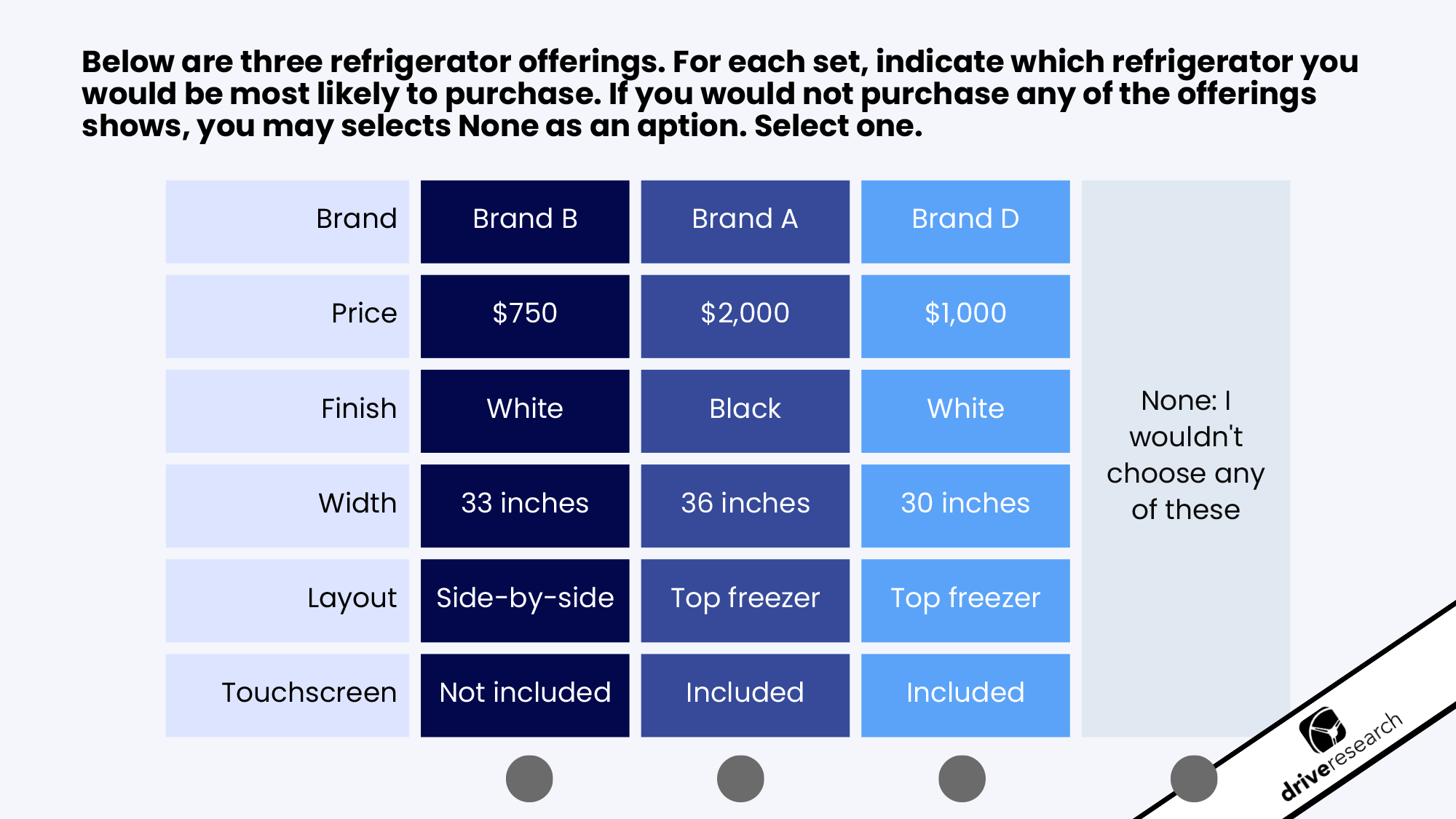
Setting the right price for your product or service is a delicate balance.
Whether you're launching a new product or reassessing your existing offerings, understanding the market and its pricing dynamics is essential.
It's why many businesses conduct pricing market research to collect insights that allow them to thrive in any ever-evolving market.
In this blog post, our pricing research company offers insights and practical tips to navigate the complexities and make informed pricing decisions that can elevate your business.
What is Pricing Research?
The main goal of a pricing research project is to uncover exactly what dollar amount customers are willing to pay for your company’s product or service. This research can help target the best price point in order to maximize revenue, profit, and more.
There is a sweet spot to aim for that includes the customers being willing to pay and still feeling like they are getting the better deal but you as a company are able to sustain profits.
The best pricing research not only tells you where the sweet spot is for your pricing - but also pricing levels to avoid (coming off cheap, eating into profits, etc.).
Pricing research done over time can also benefit how organizations change their prices based on customer sentiment.
Different pricing models can be adapted to maximize profits but other benefits are readily available such as:
- Measuring the value of your company’s brand
- Capture the highest returns on your investments
- Understand the market’s feedback towards your products/services
Why Should You Run a Pricing Research Project?
The biggest reason to run a pricing research project is to collect valuable data that can help make tough business decisions much easier.
It’s not always great to rely on gut decisions when taking the business into account - using numbers in our experience is much better.
Beyond just a profit help, it can be a great health check for any new venture, product, market, or even competition.
By using price optimization research it’s possible to increase your chances of success regardless of what it is that you’re looking into. While there are limits to a pricing research project, different models will help you uncover more of what you’re looking for depending on the project you’re wanting to run.
Methods We Use To Run Pricing Research Projects
There are a few different main pricing research methodologies used for projects. It’s best to start with a goal in mind since each objective is slightly different.
Here are a few examples of popular pricing research methods:
Van westendorp
Developed in the 1970s, the Van Westendorp method addresses the proper value or price of a product or service through a series of 4 survey questions.
It asks the following 4 questions:
- At what price do you think the product is priced so low that it makes you question its quality?
- At what price do you think the product is a bargain?
- At what price do you think the product begins to seem expensive?
- At what price do you think the product is too expensive?
If your company offers services instead of products, you can easily swap out the language.
Van Westendorp's method identifies psychological price points by surveying consumers and analyzing their answers for how much they are willing to spend. It’s also possible to see where customer sentiment falls off for different price points.
We recommend offering a range of price points for respondents when conducting a pricing survey.
The reason for this points to one of our early points in this post. When asked open-ended questions, respondents may write or type in unrealistic price points which then become outliers or unusable data.
Conjoint analysis
While there are different types of conjoint analysis, choice-based conjoint analysis is the main version that is used more often than not.
Choice-based conjoint analysis is an advanced survey technique in which respondents make choices based on combinations of various product attributes.

What sets a conjoint survey apart from other survey approaches to product optimization is how respondents must factor all the features into their decision-making.
It is critical to ensure no respondent is provided a set with the same combination of attribute levels more than once.
Recommended Reading: Using a Conjoint Choice-Based Model to Determine Product Cost
Gabor-granger
Gabor-Granger is a pricing research method typically used for determining a revenue versus demand curve for a product/service.
It involves asking potential customers how likely they are to purchase a product or service at different price points.
The Gabor-Granger pricing technique helps answer these two main questions:
- Can you change your prices without affecting sales?
- At what price points is it obvious that the consumer’s willingness and ability to pay changes?
Monadic testing
Monadic testing is usually a set of questions that ask respondents about a concept and attributes/features they like or dislike.
The target audience is divided into groups with one of the concepts and asked questions about it to determine how respondents feel about the different price points.
Contact Our Pricing Research Company
Explore the power of market research in shaping your pricing strategy! Our comprehensive market research services offer support at every stage, employing surveys, focus groups, and interviews to deliver profound insights that enable you to establish optimal price points.
Contact Drive Research today for more information:
- Message us on our website
- Email us at [email protected]
- Call us at 888-725-DATA
- Text us at 315-303-2040

Austin Parker
Austin has an extensive background in SEO as he's been blogging since 16 years old back when the internet was in its infancy. As fitting, he holds a Bachelor's degree in English with a concentration in creative writing.
Learn more about Austin, here.

